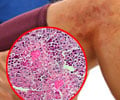A biological explanation for the connection between cesarean-section delivery and risk of allergy and asthma in childhood.
Researchers at the University of California, San Francisco claim to have identified a biological explanation for the connection between cesarean-section delivery and risk of allergy and asthma in childhood.
Several studies have shown immunological differences between children with and without allergy at the time of birth. For example, increased cord blood levels of IL-13, a Th2 type cytokine, have been positively associated with allergy among children with a family history of allergy.Regulatory T cells are a subgroup of T lymphocytes with immune suppressive properties on effector T cells, which in turn regulate cytokine secretion and the development and function of the immune system. Evidence suggests that CD4+CD25+ T regulatory (Treg) cells in those with asthma or allergy may be functionally impaired.
“Our research looked at the effect of cesarean-section versus vaginal delivery in newborns to determine whether cesarean-section was associated with reduced regulatory T-cell function,” said lead researcher Ngoc Ly, M.D., M.P.H., who is assistant professor of pediatrics at the University of California, San Francisco.
In a previous study Dr. Ly and colleagues demonstrated an association between cesarean section and increased neonatal secretion of IL-13. In this latest study, the researchers measured the expression and function of specific regulatory T-cells in the cord blood of 50 newborns born by cesarean section, and 68 delivered vaginally, all of whose have at least one parent with allergies and/or asthma.
They found that babies born by cesarean section showed a reduction in the suppressive function of their regulatory T-cells. There was a trend for lower level of TGF-â, a cytokine secreted by tregs, and higher level of IL-4 and IL-13 among children born by c-section as compared to children born by vaginal delivery.
“This finding is exciting because it suggests that the mode of delivery may be an important factor influencing immune system development in the neonate,” said Dr. Ly, who suggested that the stress and process of labor itself or exposure to specific microbes through the birth canal in vaginal as compared to c-section delivery may influence neonatal immune responses.
Advertisement
“However, this finding provided a potential immunologic basis for previous reports of the association among cesarean section, elevated IL-13 and allergy and asthma.”
Advertisement
Source-ANI
KAR











